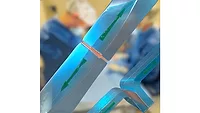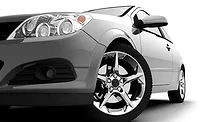Strategic Solutions
Unmet Needs in Adhesives Technology for OEM Transportation Applications
The unmet need that kept me awake at night actually stems from the open assembly time.

In my 30 years as a senior materials engineering manager with Navistar International, a truck and engine OEM, conventional automotive and truck body manufacturing plants predominantly used 1K epoxy structural adhesives due to their superior bonding performance and manufacturing-friendly properties. The adhesives’ cure is facilitated by the presence of an electro-coat (e-coat) epoxy prime system that is cured at similar temperatures by design. However, many commercial vehicle body manufacturers that are unable to justify the capital equipment expense of a full immersion e-coat system are not able to take advantage of the processing and performance benefits of 1K epoxy structural adhesives. In fact, the manufacturing of a school bus body assembled with mechanical fasteners and 2K epoxy or methyl methacrylate (MMA) structural adhesives is one such example that kept me up at night.
The assembly techniques that school bus body manufacturers use have changed little over time, compared with those of other vehicle body manufacturers. The bus bodies are constructed with flat sheet steel that is pre-coated on a roll coating line. Stamped parts that cannot be pre-coated are individually primed. While fastening methods commonly used in assembly vary by OEM and by application, standard methods for school bus bodies include welding, semi-tubular rivets, self-piercing rivets, sheet metal screws, pull rivets, and pin/collar bolts.
School bus joints must be in compliance with FMVSS-221 (a federal motor vehicle safety standard) and thus require a stiff, high-strength adhesive (typically achieved either through a 2K mixed system or 1K high-bake system). Practically speaking, regulations governing this bonding application mostly preclude the use of elastomeric adhesive/sealant systems unless strengthened with a higher number of mechanical fasteners. This regulation has not kept up with advances in understanding crash worthiness, bonding technologies, materials engineering and other safety improvements.
The unmet need that kept me awake at night actually stems from the open assembly time (i.e., the period immediately following the application of the adhesive to the substrate through to the end of the adhesive’s ability to bond). Current 2K structural adhesive joining systems have a finite open assembly time. A typical commercial vehicle body assembly plant has a continuous run of the main line and many of the feeder lines. A curing adhesive changes the sequence of assembly, requiring the line operator to prematurely close out assembly work in some sections of the line, or even to strip a line (i.e., pull product ahead of sequence in order to halt operations in the entire line or sections of the line). Unfortunately, this requirement can be disruptive to “normal” assembly line operations, but the alternative may produce poor joints and possible non-compliance with a safety standard if the joint is not completed in this window.
While no longer keeping me up at night (given my recent retirement from Navistar), ongoing pressure to reduce cure temperatures of e-coat prime systems (and subsequently the heat available for curing the 1K epoxy structural adhesives) continues to be felt in transportation markets such as automotive OEM manufacturing. The driver is the automotive OEM’s desire to use more composites and thermoplastic materials, which are prone to damage with exposure to high bake temperatures, in vehicle body construction to meet the industry’s future lightweighting requirements.
While perhaps an obvious solution from the commercial vehicle OEM’s standpoint, the structural epoxy innovation has not been easy to come by because the market demand by volume for lower temperature-cure epoxies has been insufficient to merit attention by adhesive formulators without the support of automotive OEMs. Dow Automotive responded to my requests on behalf of Navistar and has demonstrated significant progress in developing low-temperature-cure BETAMATE™ epoxy adhesives that may someday solve the aforementioned problems in school bus body assembly applications, as well as provide opportunities to automotive OEMs for using lower heat resistant body materials.
Automotive OEMs can benefit from lower cure temperatures with broader material usage and lower energy costs. In the commercial vehicle sector, OEMs are seeking to lower their total applied costs, but that does not necessarily equate to a requirement for lower per-pound prices for structural adhesives. When an OEM switches from a 2K to 1K system, waste is greatly reduced, quality is improved, and superior joining methods become available, paving the way for a greater freedom in body design and improved efficiency in vehicle body assembly operations, which adds up to a significant benefit that can offset the higher cost of the adhesive materials.
Daniel R. Daley is a senior consultant of The ChemQuest Group Inc., a global business strategy firm in specialty chemicals, headquartered in Cincinnati, Ohio. For more information, phone (513) 469-7555 or visit www.chemquest.com.
Any views or opinions expressed in this column are those of the author and do not represent those of ASI, its staff, Editorial Advisory Board or BNP Media.
Looking for a reprint of this article?
From high-res PDFs to custom plaques, order your copy today!





